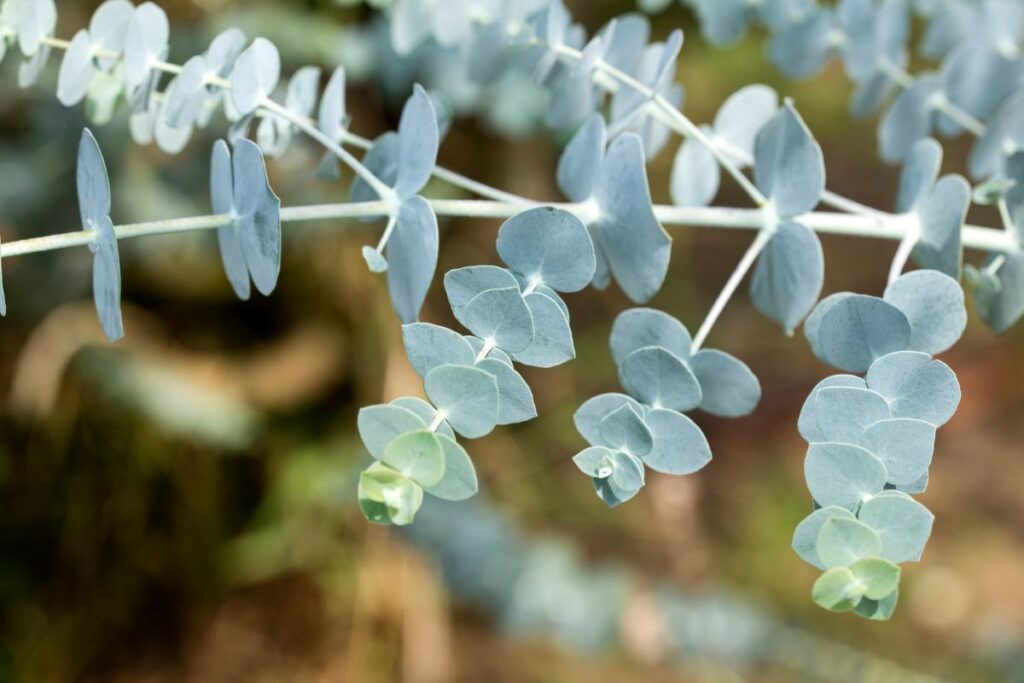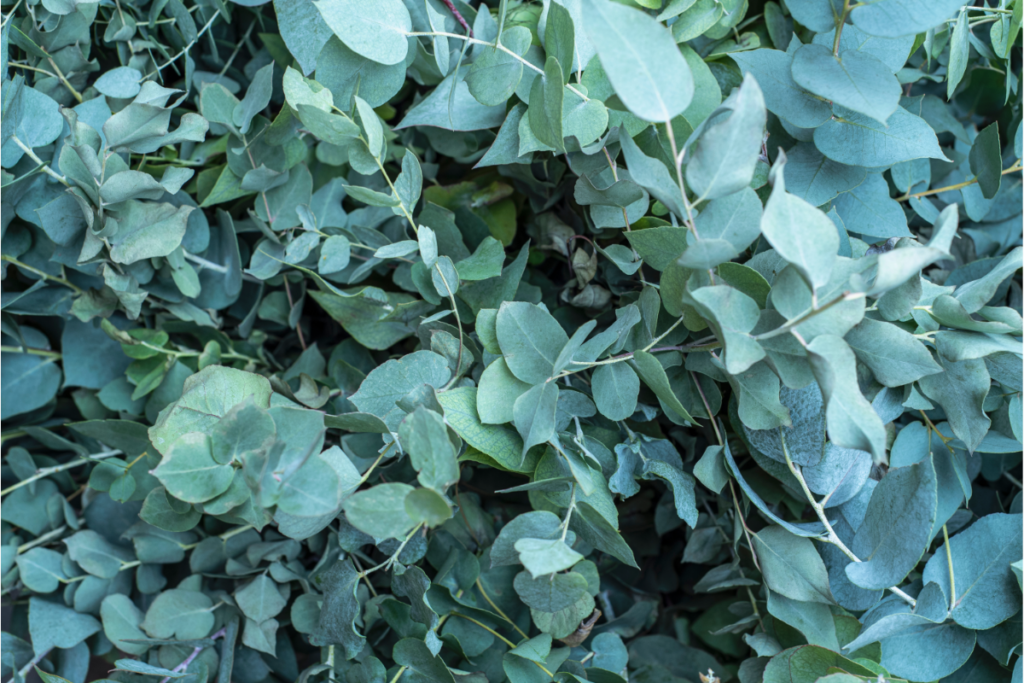No one wants a garden ravished by bugs! But when you start getting whatever type of bug, how do you get rid of them!?
Well, one of the best ways is to grow certain plants with bug-repelling qualities. And one of the very best of these is eucalyptus.
Eucalyptus plants have been scientifically proven to repel a range of bugs, including:
- Mosquitoes
- Aphids
- Ticks
- Flies
- Silverfish
- Moths
- Fleas
- Cockroaches
I’ve been growing eucalyptus for years, and in this guide, I’ll take a look at all these bugs in turn, and show you:
- How to identify each of these bugs (so you know what you are up against)
- The impact each of them has on your garden (if left to their own devices)
- How eucalyptus works at repelling these bugs and leaving your garden to bloom and flourish in peace.

1. Mosquitoes
Identification
Let’s start with probably the biggest pest of them all – mosquitoes!
These are the insect that has had the most negative impact on the human race, sadly. But how do you spot them?
I’m sure many of you know what a mosquito looks like, but if not, mosquitoes have:
- A slender body
- Long legs
- A long proboscis (sucker) that they use to bite a draw blood. Interestingly, it is the females that do this
- They have a distinctive quite high-pitched buzzing sound. This is their calling card
Impact On Your Garden
The main nuisance caused by mosquitoes is biting either humans or animals. Very annoying, and potentially can cause a range of diseases.
Why Eucalyptus Repels Them
There has been research carried out that suggests that the strong smell of eucalyptus can mask the scents that attract mosquitoes to your garden in the first place. This also makes it harder for them to find their target plants. (Source)
Eucalyptus also contains cineole, which acts as a kind of insect repellent. Mosquitoes don’t like this compound one little bit!
2. Aphids
Identification
Here’s another common one for you – aphids. These are small insects.
They come in a range of colors, including:
- Green
- Yellow
- Brown
- Red
- Black
It kind of depends on what species they are and the plants that they feed on.
Top tip – you will often find them on the undersides of leaves – so beware!
Impact On Your Garden
The favorite trick of aphids is to such sap from your plants! A telltale sign you have them is if your leaves start to curl, go yellow, or drop.
Aphids can also transmit plant diseases, so all-in-all they are not your best friend in the garden by any means.
How Eucalyptus Repels Aphids
Luckily, eucalyptus has anti-aphid qualities. I have heard of people actually spraying their plants with a mixture of water and eucalyptus oil, with the sole intention of keeping aphids away. (Source)
Growing eucalyptus is just as good a solution.
3. Ticks
Identification
Ticks are actually a kind of spider, rather than an insect (fun fact for you!). They are arachnids.
They usually have the following features:
- They are dark in color
- They have a flat body before feeding
- Their body swells as they consume blood! (lovely)
Impact On Your Garden
A bit like mosquitoes, the main nuisance that ticks cause is biting humans and pets. They do little harm to plants. They just irritate those in the general vicinity!
How Eucalyptus Repels Them
Luckily, eucalyptus is one of the best plants at repelling them.
You may have noticed that often tick repellent contains eucalyptus oil. That’s not a coincidence!
The strong scent of eucalyptus helps to deter ticks. (Source)
If you have a big problem with ticks in your garden, a combination of growing eucalyptus and spraying eucalyptus oil on plants could well be the way to go.
Eucalyptus contains a compound called eucalyptol. This compound:
- Has insecticidal properties
- Is effective in repelling ticks

4. Flies
Identification
I guess we all know what these look like! But for the uninitiated:
- They are small insects
- Flies have two sets of wings – the front pair for flights, and the ‘hindwings’ for balance
- They have compound eyes!
- Their mouth is designed for piercing and sucking
Impact On Your Garden
Flies are not great in the garden. Their two biggest impacts is that they spread disease and that they can damage plants as well.
How Eucalyptus Repels Them
Luckily for humans, eucalyptus contains compounds that flies find deeply unpleasant. This means they tend to avoid it if they can.
Flies are actually strongly led by their sense of smell. They use this sense as their primary way of finding food.
Eucalyptus basically messes this up! Flies don’t like this, so they try to go elsewhere. (Source)
5. Silverfish
Identification
These are pretty distinctive looking. They really do look quite fish-like in their movements. Silverfish:
- Are small insects without wings
- They are silvery-grey and blue in color
- They have a fish-like appearance when they move
Impact On Your Garden
In fairness, silverfish are more known for damaging materials indoors, particularly in damp space.
However, they may occasionally venture outdoors and nibble stems and leaves.
More importantly, often if you have silverfish, it may indicate that you have a range of other pests present.
How Eucalyptus Repels Them
Eucalyptus can be used indoors especially to repel silverfish. It has really pungent odor which is unpleasant to silverfish.
The scent of eucalyptus can:
- Disrupt their feeding patterns
- Disrupt their breeding patterns
6. Moths
Identification
Moths are usually nocturnal (they come out at night). They look a bit like brown butterflies (to describe them in the simplest possible way!). To get a bit more technical, they have feathery antennae.
Impact On Your Garden
Some moths can cause damage to plants. This especially happens when their larvae are present on leaves. These larvae (caterpillars) then eat the leaves to grow.
How Eucalyptus Repels Moths
Once again, it is quite simply the potent smell of eucalyptus that acts to repel moths. It works beautifully as a natural deterrent.
7. Fleas
Identification
This is another nasty critter that you don’t want too many of! Fleas are:
- Small wingless insects
- They are dark in color
- They have a tough outer shell
- They have long hind legs that they used to jump!
Impact On Your Garden
Fleas are another pest that effect animals more than plants. If you have pets in your garden, for example, you want to keep them away from fleas!
How Eucalyptus Repels Them
Eucalyptus is often used as an alternative to chemical-based flea treatments.
It’s strong aroma is know to repel fleas.
Eucalyptus oil is often used as a natural flea repellent. The strong aroma of eucalyptus is known to repel fleas, making it a popular choice for pet owners seeking natural alternatives to chemical-based flea treatments. (Source)
8. Cockroaches
Identification
Cockroaches! Ahh!
I once got a cockroach down my shirt, and it was not a pleasant experience!
Cockroaches are:
- Brown or black insects
- They have a flat, oval-shaped body
- They have a small head
- They have large wings folded on their back
- Some cockroaches can fly and some can’t!
Impact
Cockroaches are usually more of pest indoors. They are not known for doing damage to garden plants.
Instead, they can spread disease indoors.
How Eucalyptus Repels Them
Eucalyptus oil is often added to cockroach repellents. This shows how powerful it is!
The strong odor has several impacts on cockroaches, including:
- It disrupts their pheromone trail
- This makes it difficult for cockroaches to navigate
- It also stops them from communicating effectively with other cockroaches!
Some Final Pearls Of Wisdom About Eucalyptus
Just please remember that eucalyptus can act to deter pests, but it probably cannot eliminate them altogether.
This is especially true if you have a bit of a pest infestation (not nice!).

